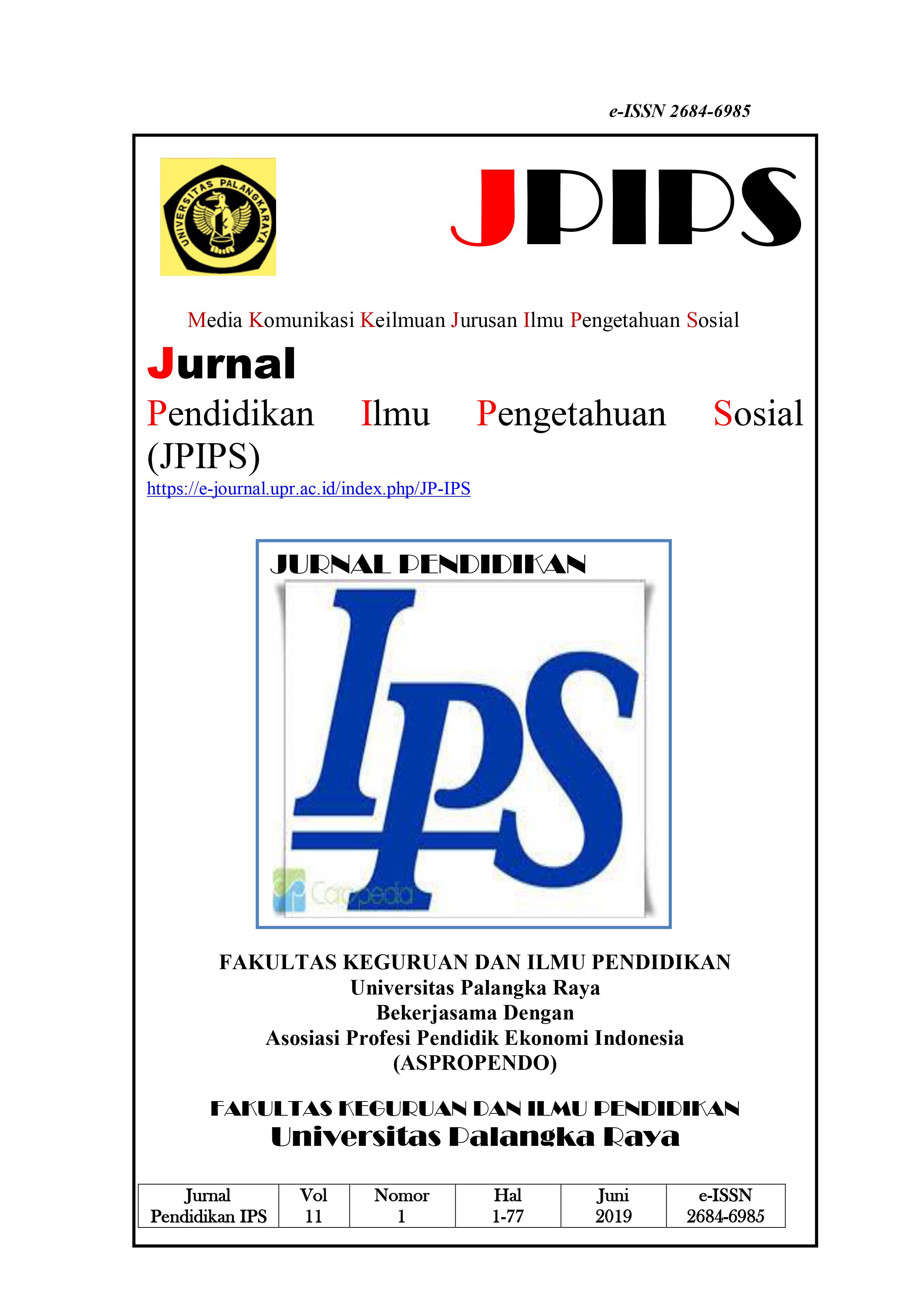Analisis Faktor Penyebab Rendahnya Motivasi Belajar IPS Pada Pembelajaran Tatap Muka Pasca Pandemi
DOI:
https://doi.org/10.37304/jpips.v15i1.9480Keywords:
learning motivation, pandemic, social studiesAbstract
The purpose of this study was to describe the factors causing low social studies motivation in face-to-face learning after the pandemic (Covid-19) at SMA Negeri 1 Seyegan. This study uses a type of qualitative research conducted at SMA Negeri 1 Seyegan Sleman Yogyakarta. The subjects of this study were the Subject Teachers of Social Science Subjects and Students at SMA Negeri 1 Seyegan. Data were analyzed using data reduction, data presentation, and drawing conclusions. The results of the study show that after online learning has been carried out for approximately 1.5 years, it has a significant influence on students' learning motivation. Face-to-face learning was carried out starting at the end of 2021 and the results obtained were that the factors causing the low learning motivation of students were that the learning motivation of students had decreased because they were still adapting to face-to-face learning, they still had a tendency to depend on smartphones to find answers to the assignments given, the absence of the National Examination as a determinant of graduation, as well as the learning process which is monotonous and pays little attention to the aspirations of students. Efforts that can be made by schools to increase learning motivation are of course teachers can choose learning models that are more creative and innovative so that the learning atmosphere becomes more enjoyable. Through the right learning model will have a positive impact on the development of students' learning motivation.
Downloads
References
Abdillah, Pius & Albarry. Kamus Ilmiah Populer. Surabaya: Arloka.
Ana Uka, 2014, Student Satisfaction As An Indicator Of Quality In Higher Education, Journal of educational and instructional studies in the world, August 2014, Volume: 4 Issue: 3 Article: 02 ISSN: 2146-7463.
Badaruddin.2012. Motivasi Belajar. (online), (http://ayahalby.wordpress.com,diakses tanggal 30 Januari 2012)
Dimyati, Mudjiono. 2010. Belajar Dan Pembelajaran. Jakarta: PT. Rineka
Herman Nirwana. 2003.“ Hubungan Tingkat Aspirasi Dan Persepsi Tentang Belajar Dengan Hasil Belajar Matematika Siswa Smu Yang Berlatar Belakang Budaya Minang Kabau Dan Batak”. Disertasi. Tidak Diterbitkan. Malang :Program Pasca Sarjana IKIP Malang.
Kardi. (2016). Pengaruh Kedisiplinan Belajar dan Minat Belajar Terhadap Prestasi Belajar Siswa Kelas VIII smp Negeri 1 Dagangan Kabupaten Madiun Tahun Ajaran 2010/2011.
Kotler, Philip Dan Kevin Lane Keller, 2008, Manajemen Pemasaran. Edisi Kedua Belas. Indeks : Jakarta
Lestari, M., Haetami, M., & Hidasari, F. P. (2019). Motivasi, Disiplin dan Hasil Belajar Peserta Didik yang Mengikuti Ekstrakurikuler Olahraga di SMK Negeri 5 Pontianak. Jurnal Pendidikan Dan Pembelajaran, 8(3), 1–9.
Lusi, Lestari, S., & Purwanti. (2015). Hubungan Motivasi Belajar Siswa Dengan Disiplin Belajar Pada Siswa Kelas X Sekolah Menengah Atas Mujahidin Pontianak. Jurnal Pendidikan Dan Pembelajaran Khatulistiwa, 4, 1–10. https://jurnal.untan.ac.id/index.php/jpdpb/article/view/11158/10594
Marzuki, K., & Amir, R. (2019). Kepuasan Belajar Warga Belajar Pada Program Kesetaraan Paket C. Prosiding Seminar Nasional LP2M, 601–601.
Melvin, T. (2017). Hubungan Antara Disiplin Belajar Di Sekolah Dengan Hasil Belajar Geografi Pada Siswa Kelas X SMA Negeri 10 Kendari. Jurnal Penelitian Pendidikan Geografi Volume 1 No. 1 April 2017.
Moslem, M. C., Komaro, M., & Yayat, Y. (2019). Faktor-Faktor yang menyebabkan rendahnya motivasi belajar siswa dalam mata pelajaran aircraft drawing di SMK. Journal of Mechanical Engineering Education, 6(2), 258-265.
Nana Sudjana. (2004). Dasar-Dasar Proses Belajar Mengajar. Bandung: Sinar Baru Algessindo
Naser Ibrahim Saif MD, 2014, The Effect of Service Quality on Student Satisfaction: A Field Study for Health Services Administration Students, International Journal of Humanities and Social Science, Vol. 4, No. 8; June 2014
Ramlah, dkk.2014.Pengaruh Gaya Belajar dan Keaktifan Siswa Terhadap Prestasi Belajar Matematika ( Survey Pada SMP Negeri di Kecamatan Klari Kabupaten Karawang), Jurnal
Wati, E., Daharnis, D., & Syahniar, S. (2013). Hubungan antara Aspirasi Siswa dan Dukungan Orangtua dengan Motivasi Belajar serta Implikasinya terhadap Bimbingan Konseling. Konselor, 2(1), 107–113. https://doi.org/10.24036/0201321871-0-00
Wibowo. (2007). Manajemen Kinerja. Jakarta: Raja Grafindo Persada.
Yasir, M., Suarman, S., & Gusnardi, G. (2017). Analisis Tingkat Kepuasan Siswa dan Motivasi Dalam Pembelajaran Kelompok (Cooperative Learning) dan Kaitannya Dengan Hasil Belajar Akuntansi di SMK Labor Binaan FKIP UNRI Pekanbaru. Jurnal Pekbis, Volume 9(2), 77–90.














